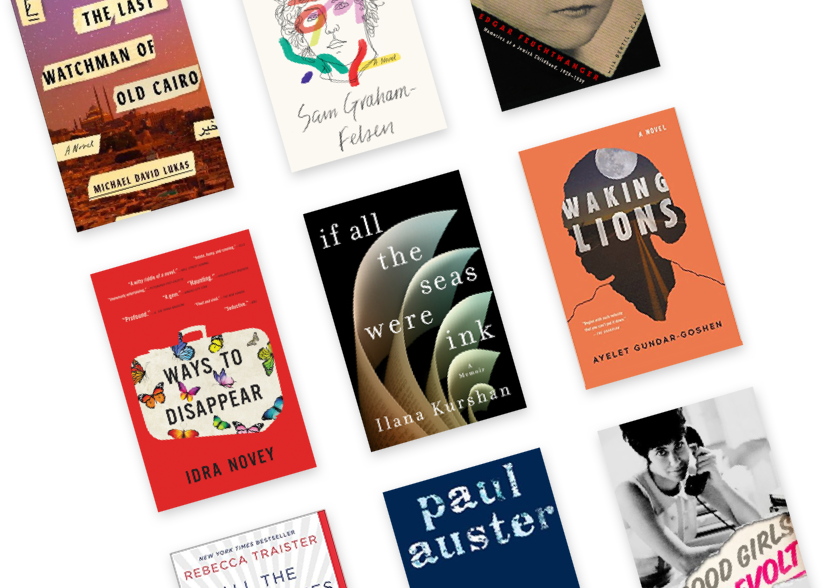There is nothing like love to undo the bonds of hate. It can open the doors to friendship, understanding, and coming together to fight oppression.
Mary Glickman’s new novel, Ain’t No Grave, begins in 1906 in a small town in rural Georgia. The story follows the relationship of Max Sassaport, the son of white middle-class Jews, and Ruby Johnson, the daughter of non-Jewish Black sharecroppers.
Although the people in their lives disapprove of their friendship, Max and Ruby are drawn to one another because of their mutual outsider status. Years later, the trial of Leo Frank threatens their relationship and the ties between their communities. Max and Ruby are simply two kids trying to get by in a world that keeps them down. Even though Max’s skin color and gender open doors that remain closed to Ruby, his faith still puts a target on his back.
What starts as a bond that is trying to survive against all odds slowly turns into an event that reveals the darker sides of our collective past. Hate and groupthink give way to destruction; logic and the ability to act calmly go out the window. The air crackles with energy. It is merely (as we know now) a matter of time before violence occurs.
Though Ain’t No Grave is short, it packs a wallop. In under three hundred pages, Glickman combines fact and fiction in a manner that is both responsible and engaging. Ultimately, the book holds onto the hope that we can all get along — a message that we all could use a dose of right now.
Adina Bernstein has been a writer and blogger since 2014. She lives in Brooklyn and needs writing to survive this crazy world we live in. She can be found online at https://writergurlny.wordpress.com/.
Discussion Questions
Courtesy of Mary Glickman
- The child murder that is central to Ain’t No Grave’s action occurs at a factory in Atlanta, the National Pencil Factory, during an era that saw mass employment of children as young as nine.
- In 1913, child labor was both legal and substantially damaging to most children in the grasp of big Industry. Disease frequently swept through factory populations, not sparing its most vulnerable, and on-the-job injury was common. Protest was frequent.
- In 1938, federal labor law outlawed child workers in factories and mines. Children under the age of 14 were permitted to work in agricultural jobs with parental permission. That exemption was born with the family farm in mind but is not restricted to it.
- Across the globe, children are employed in factories, mines, and fields without restrictions or protections. Many American corporations take advantage of that reality to produce cheaper goods.
- Currently in the US, children are allowed to work in certain sectors (think television actors, for example), but if the child is under 12, he/she is restricted to 3 hours of work per school day.
- Children employed in agriculture may work up to 10 hours a day, depending upon the season.
The chief witness during the trial against Nation Pencil manager Leo Frank was Jim Conley, the factory’s Black janitor, a man considered the true murderer post trial and lynching, when his own lawyer broke the legal code of ethics to announce that Conley had confessed to him. (Two other men came forward to report that while drunk, Conley confessed to them, too.)
The case pitted Blacks and Jews against each other as the streets of Atlanta erupted first with racist and then with anti-Semitic protest. The shift from one brand of hate to another was quick. People were fired up by the press.
What is the difference between racism and anti-Semitism? Is there one?
- For two years, Leo Frank was front page news. What about the case made it a sensation? How much did the media of the day have to do with the trial’s result? With the commutation of Frank’s sentence? With his lynching? What stops the press from manipulating opinion today?
- Ain’t No Grave uses spiritualist notes to foreshadow, as points of tension, and as metaphor. What are some examples from the text? (The predictions of Mayhayley Lancaster, Uncle Morris and his Siren, Max’s encounter with the snake preacher.)
- When they are first separated, Ruby hears Max’s voice in her head, advising her as she makes her way to Atlanta. Back home in Buckwood, Max calls to her across time and space but never hears a response from her. What keeps them connected until they reunite five years later? Why does Ruby fear she’ll lose Max when they return to Buckwood for a family emergency?
- Rabbi Marx of The Temple hosts Frank’s wife Lucille and later, Sigmund Livingston at rallies supporting the defendant and raising money for the fledgling ADL. How are these received by the community at large?
- Do you feel that the challenges presented in Ain’t No Grave have particular resonance with the challenges today’s Jewish community experience? In what way? In Frank’s day, a multitude of Georgian Jews left the state. What would the proper response be today?
Suggested Additional Reading
And the Dead Shall Rise: the Murder of Mary Phagan and the Lynching of Leo Frank, Steve Oney 2003, Random House
Black-Jewish Relations on Trial: Leo Frank and Jim Conley in the New South, Jeffrey Melnick 2000, University Press of Mississippi
An Unspeakable Crime: The Prosecution and Persecution of Leo Frank, Elaine Marie Alphin, 2010, CarolRhoda Books
Oracle of the Ages: Reflections on the Curious Life of Fortune Teller Mayhayley Lancaster, Dot Moore with Katie Lamar Smith, 2007, New South Books

